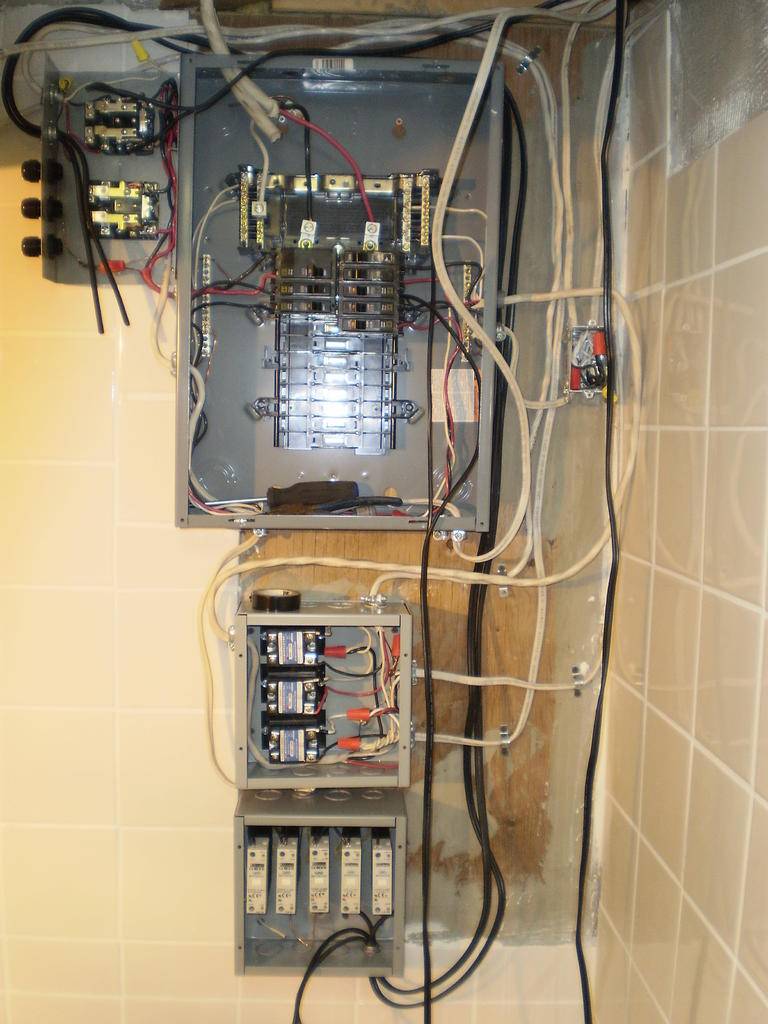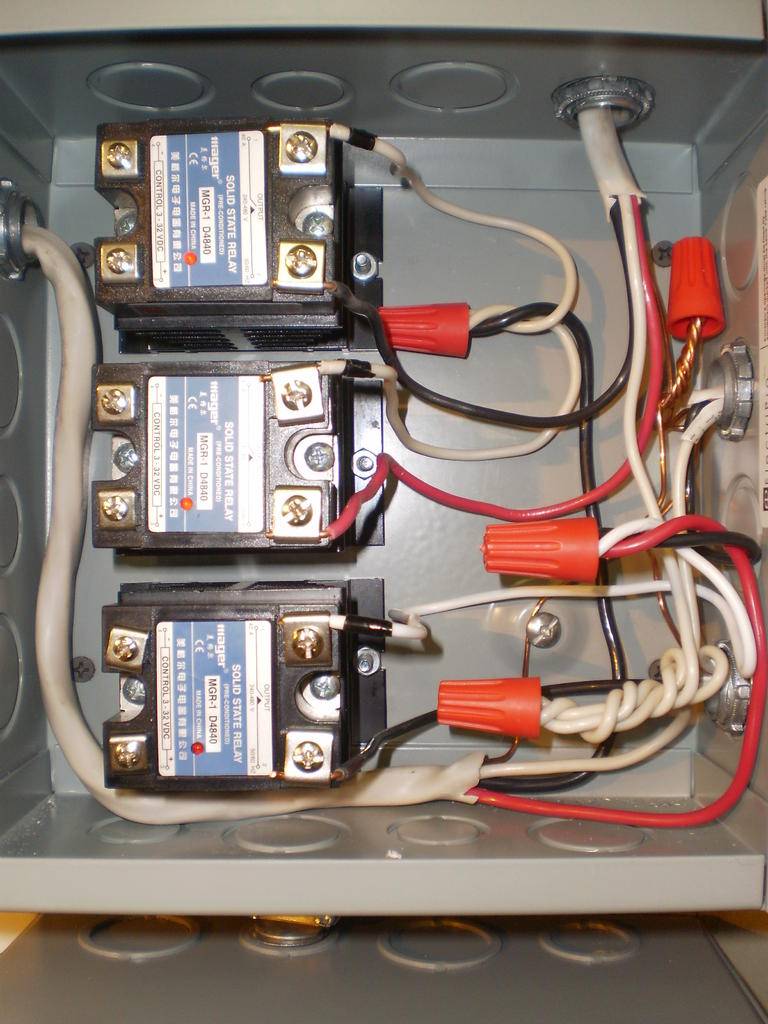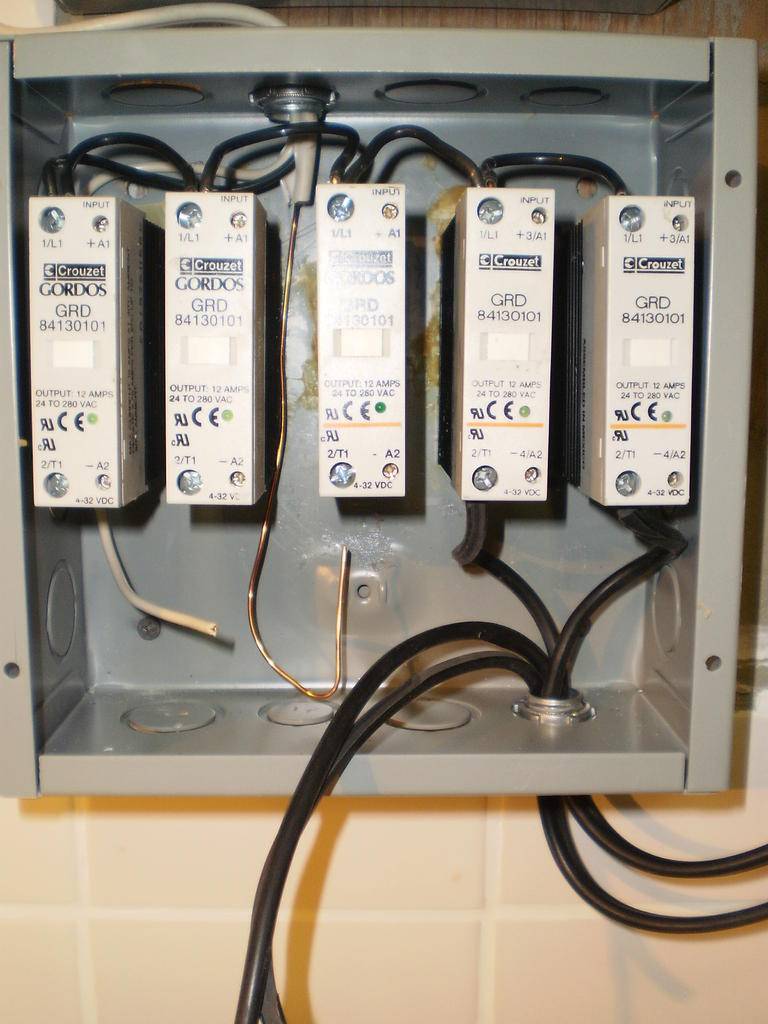Hi Madpenguin would you please check these before i put power on
some electric

lower relay are for dehu. 2 x 15 amp 110v. 14/3
upper relay are for light 2 x 20 amp 220v. 10/2
controled by ssr (solid state relay)

Switching box (ssr controled by computer)

upper box are for high power switching 12/3 2 x 15 amp
load look like this pump 7amp 110v. UC cooling (fridge) 5 amp 110v.Some fans 4 amp 110v.And 1 (not switched) 5 amp 110v.

lower box are for low power switching 14/2 1 x 15 amp
coil relay see first pic,heat exchanger,sulfer burner,selenoid valve,

__________________
some electric
lower relay are for dehu. 2 x 15 amp 110v. 14/3
upper relay are for light 2 x 20 amp 220v. 10/2
controled by ssr (solid state relay)
Switching box (ssr controled by computer)
upper box are for high power switching 12/3 2 x 15 amp
load look like this pump 7amp 110v. UC cooling (fridge) 5 amp 110v.Some fans 4 amp 110v.And 1 (not switched) 5 amp 110v.
lower box are for low power switching 14/2 1 x 15 amp
coil relay see first pic,heat exchanger,sulfer burner,selenoid valve,
__________________











